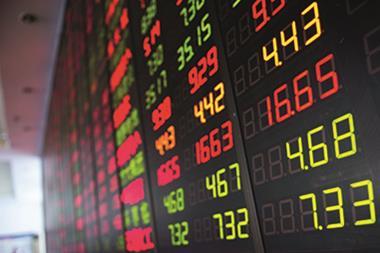Early adopters of property derivatives are now able to complete more complex trades than ever and are seeing new opportunities arise as the market continues to mature.

These opportunities will only increase if the property industry can encourage new entrants into the market.
Unfortunately, the issue of perceived illiquidity remains. Unless new participants enter the market, liquidity will not improve.
There is also the perception of risk associated with derivatives, but this is ill-founded. Those who know the MSCI index best are the fund managers who contribute to the very index the derivatives are based upon. It is like the trainers and owners yard at Cheltenham.
The futures market is a nil sum game. Buyers and sellers will cancel each other out and the end result each year is zero. What varies are the objectives different parties seek to achieve by trading derivatives.
As a tool for managing liquidity, insurance companies and pension funds may try to sell their exposure to real estate. An open-ended property fund with a high cash balance would be a natural buyer.

If the market goes up, the insurance company and pension fund have hedged their exposure to property. While they will lose on the derivative, they will make money on their physical portfolio. The other side would make money on both. Everyone can be a winner.
L&G has traded more than £1.1bn of property derivatives since 2009. Last December, L&G purchased £25m of 2016 ‘All Property’ and made an annualised profit of 6.3% before costs.
Useful trades
The benefit of having many participants with different active positions or investment objectives is that a market is more likely to be made and a price will become more visible. At L&G, we note that the rise in entrants has opened up the possibility for more targeted and useful trades to happen.
For example, in our first subsector trade we increased our exposure to industrial and cut our exposure to retail. It was a quick and cost-effective way for us to manage our exposure without doing a property deal with all its related costs.
Derivatives complement physical property and are essential for fund managers to efficiently manage risk and returns. They can help reduce a cash drag in a fund, cut transaction costs and manage liquidity.
Derivatives complement physical property and are essential for fund managers to efficiently manage risk and returns
Why is everyone not jumping on the derivatives wagon? Many property fund managers have a long-term vision for the market and their assets and would not necessarily look at short-term outlooks, which derivatives can represent.
They may view derivatives as a risk. I would argue, though, that as fund manager we need to have the ability to take advantage of different situations and act nimbly. The belief around the perceived risks of the derivatives market lies more in a lack of knowledge than reality.
Bigger picture
Senior leaders need to educate fund managers. This takes time because mandates will need to be set up to allow funds to trade. For a market that only accounts for 2% of assets under management, this can be a tough sell.
A functioning market relies on varied interested parties. We need to look at the bigger picture. How can we get the best results for investors?
In the past year, different market events have created uncertainty. With the general election, we need all the tools we can get to execute the trades uncertain markets throw up. The need for more market tools is greater than ever given lower expected returns and high transaction costs.
The ideal is to trade more to provide greater risk mitigation - as in other markets - rather than purely as a route to enhance total return. A better risk-adjusted outcome should be the goal for all fund managers.





























No comments yet